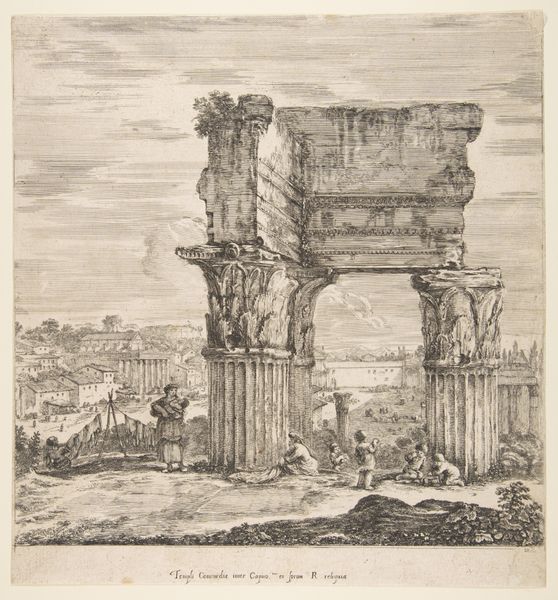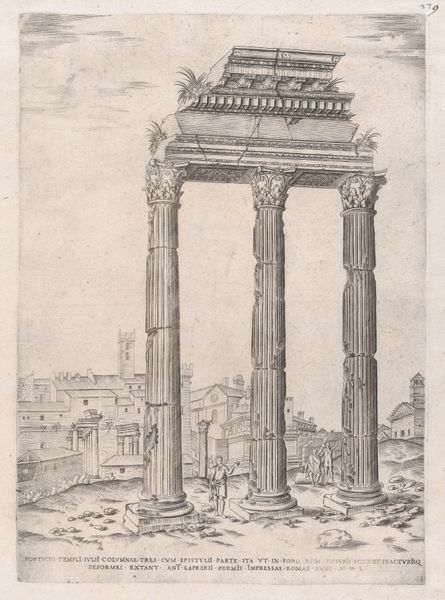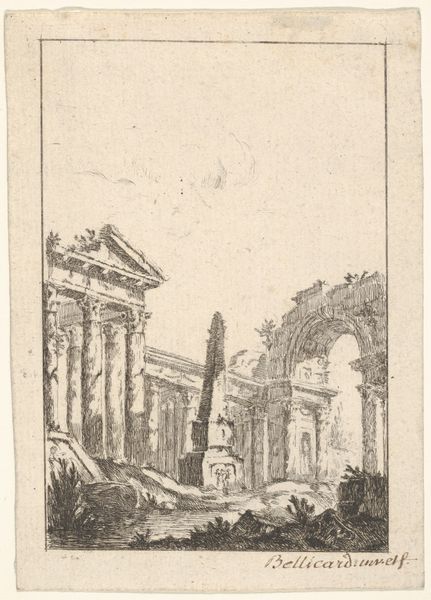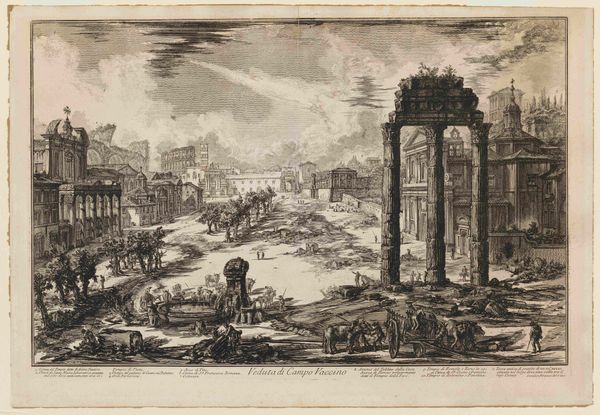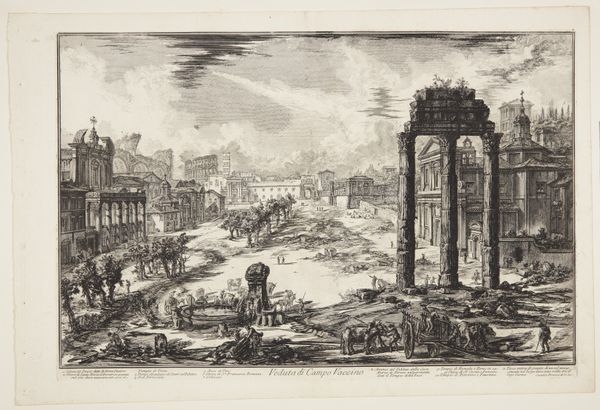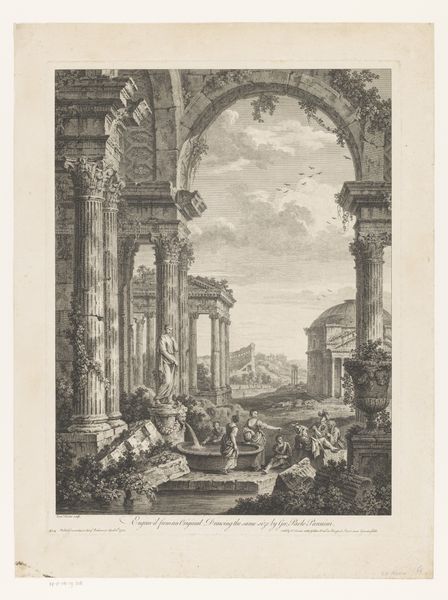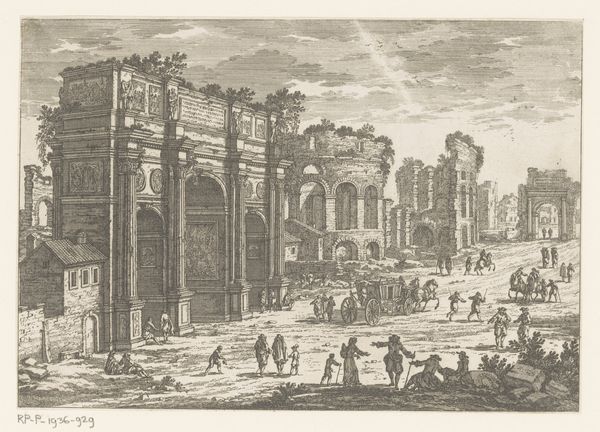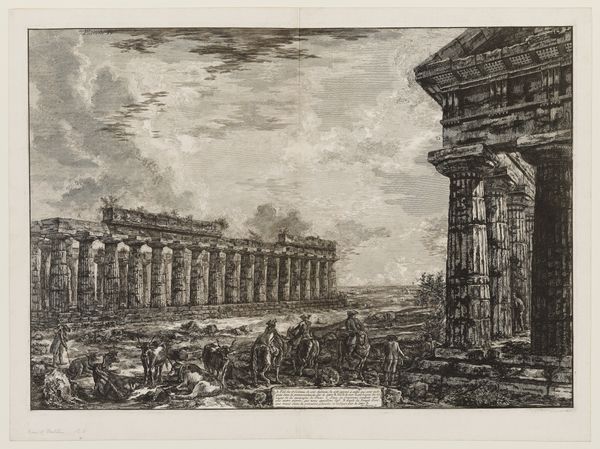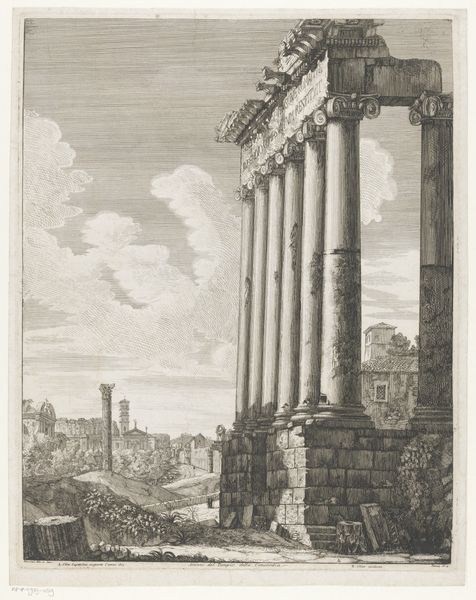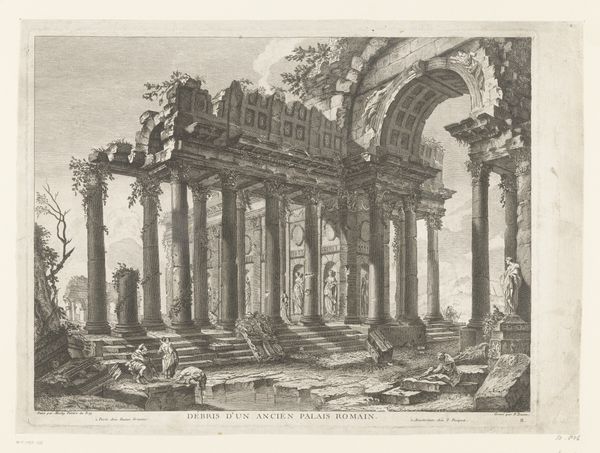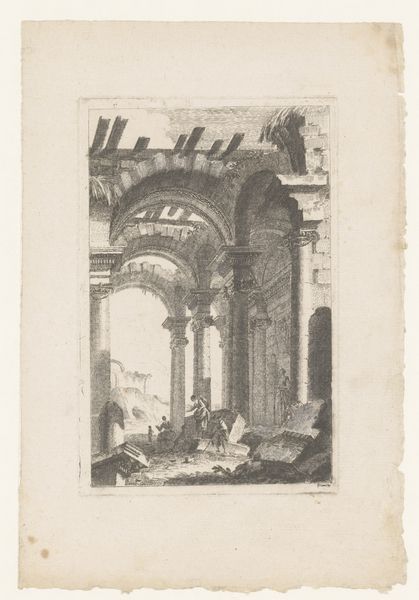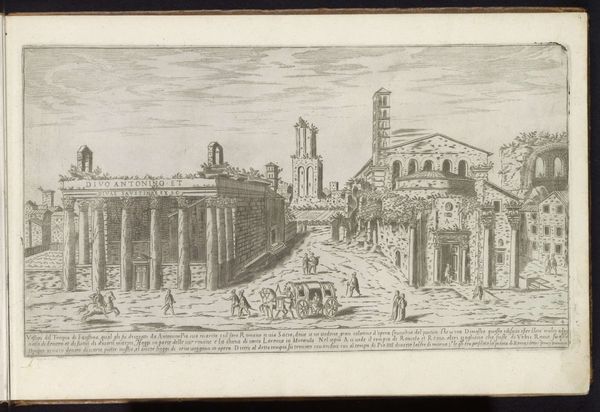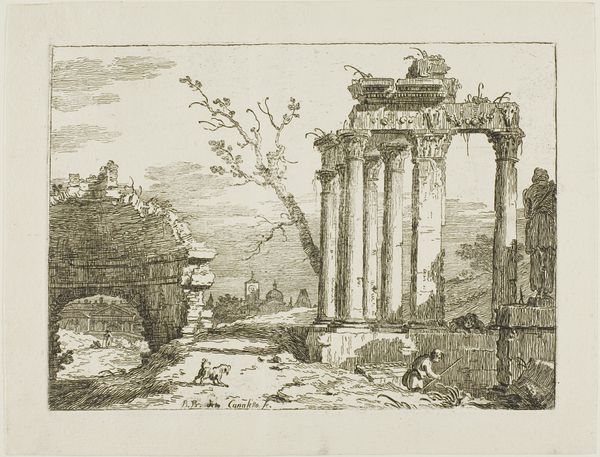
The columns of the Temple of Antoninus to right, a part of the Campo Vaccino in center and at left, along with various animals and figures, the Palatine ruins in the background, from 'Six large views, four of Rome, and two of the Roman countryside' (Six grandes vues, dont quatre de Rome et deux de la Campagne romaine) 1656
0:00
0:00
drawing, print, etching
#
pen and ink
#
landscape illustration sketch
#
drawing
#
light pencil work
#
ink drawing
# print
#
pen sketch
#
etching
#
pencil sketch
#
sketch book
#
landscape
#
romanesque
#
column
#
pen-ink sketch
#
horse
#
pen work
#
cityscape
#
pencil work
#
history-painting
Dimensions: Sheet: 12 1/4 in. × 11 in. (31.1 × 28 cm)
Copyright: Public Domain
Editor: This etching, "The Columns of the Temple of Antoninus…" made in 1656 by Stefano della Bella, is a whirlwind of ancient ruins, farm animals, and tiny people! I'm immediately struck by how much is happening in one scene. What's your read on this piece? Curator: It's a glimpse into a world layered with time, isn’t it? The Temple of Antoninus stands almost stoically to the side, a sentinel to the bustling scene in the Campo Vaccino – what was essentially a Roman cattle market! Della Bella gives us a fascinating juxtaposition: grand, decaying monuments alongside the daily grind. Think about it, those columns were already ancient when Della Bella sketched them! It's a bit like finding beauty in decay, a reflection on the transience of empires against the ever-present pulse of life. What do you make of the sheer *activity* in the foreground? Editor: It almost feels like a chaotic snapshot of everyday life in Rome at the time, doesn't it? Like a freeze-frame from a really busy day at the market. I notice how small the figures are in comparison to the ruins, emphasizing that grandeur you mentioned! Curator: Exactly! It diminishes us, places us in the shadow of history, doesn’t it? But look at the light touch of Della Bella's lines – it's so airy, despite all the detail. It's like he's reminding us that even in the face of overwhelming history, there's still light, there's still life. It feels strangely hopeful, even among the rubble. Editor: It's funny; I came in thinking this was just a historical record, but now I'm seeing it as a commentary on time, life, and even hope! Curator: Precisely. It’s the best kind of history lesson – the one that makes you feel, not just remember. Thanks for opening my eyes to its vibrancy again.
Comments
No comments
Be the first to comment and join the conversation on the ultimate creative platform.
